The World at War: Ultimate Restored Edition
The World at War was a monumental television project with 26 hour-long programmes broadcast in 1973-'74 covering the entire Second World War from its outbreak in 1939 when Neville Chamberlain declared war on Germany to peace time six years later. It has been released before DVD but is now having a special DVD and Blu-ray release. I was only provided with the first disc which covers the rise to power of Adolf Hitler, the Nazi expansion into Europe under the watchful gaze of the international community all the way through to declaration of war and the months of inaction that followed, the scuttling of the Graf Spee, Britain's ill-fated invasion of Norway, Dunkirk and the Blitz with the promise that the next episode will look at Hitler's declaration of war on the Soviet Union.
Although I studied this period of history at GCSE and A-level, this series of one-hour documentaries contains a great deal of information that I simply didn't know about one you in patchy detail but not in any comprehensive way. The sheer amount of archival footage that has been gathered together along with interviews from people on both sides and even civilians gives you an even greater insight into the conflict and how it was perceived. The second episode on the 'phoney war' (the second episode, Distant War) following Chamberlain's announcement on September 3, 1939, that "a state of war now exists between us and Germany" is extremely eye opening as I quite naturally assumed that a declaration of war is followed by some fighting, not a series of months when the British government didn't quite know what to do, the French thought that the war would be fought along the same lines as the one 20 years earlier was the Germans were extremely busy rearming, building tanks, planes, battleships and training soldiers. The level of naïveté during his period on the Allied side is breathtaking.
The timing of the initial broadcast and its filming is interesting as it allows the level of propaganda to shrink and yet catch enough combatants and civilians to give you their point of view. One couldn't make a similar series now as most of the contributors, if not all of them, have probably passed away or their memories will have been clouded in the mists of time. In The World at War, therefore you have a series of extremely interesting and articulate people who were intimately involved in the decision-making processes including Lord Halifax (who was the British Foreign Secretary throughout the war) along with members of the French and German armies who give their own perspectives on events from 1933 to 1941.
As someone who grew up slightly obsessed by war, being taken to the Imperial War Museum, the Normandy beaches where the D-Day landings occurred and Oradour-sur-Glane, (the footage of which begins this series) when I was younger before realising that war was not all fun and intrinsically fascinating, but something terrible, devastating and incredibly destructive, both physically and mentally (a trip to Auschwitz-Birkenau in 1995 really brought on the true horrors of war). Nevertheless, I was enthralled by the four episodes I saw as it wasn't just a rehash of things you were taught in school, but something much more detailed and comprehensive. You really couldn't do something of this magnitude in less time as the war, by its very title, was one that took place throughout the world from Western Europe to North Africa, South America to the Pacific Islands and Japan. It really was a global conflict and in order to cover each location and battle for political intrigue, you have to have a great deal of time to explain things in detail, showing the war as it was fought by footage shot by men on the front line through to reminisces by those involved at every level.
If you haven't seen the show and have any interest in World War II then you will find this absolutely fascinating as it not only shows you the enormity of the conflict, but just how much impact small decisions had on the length of the war and its outcome. The narration, by Sir Laurence Olivier, is superbly written and the delivery is of the standard you would expect from one of the greatest stage actors who ever lived. It is quite clear that a great deal of research had been done, not only to locate the archival footage and people willing to be interviewed, but to find the correct writers for each episode as every historian will have their own specialty and some will know more about different elements of the conflict than others. Although I only saw four episodes, I could quite happily sat through the other twenty-two as the series (as I understand it) went on to examine the politics in Japan, the conflict in Russia and the Holocaust.
The Disc
Extra Features
As I only received one disc for review, I can only comment on the extra features on the first disc which is led by the 50 minutes retrospective The Making of The World at War in which producer Jeremy Isaacs goes through the process of deciding to make the program, which conflicts to cover, which elements to omit and how to treat newsreel and propaganda footage, using untreated rushes whenever possible.
You have a summary of each episode in text form as well as a text based essay called A Brief History of The World at War and brief biographies for Neville Chamberlain, Winston Churchill, Dwight Eisenhower, Paul Goebbels, Hermann Goering, Arthur 'Bomber' Harris, Heinrich Himmler, Adolf Hitler, Benito Mussolini and various other important players in the Second World War.
The Picture
Considering the film was made in the 1970s using interviews from the time and archival footage and photographs from the 1930s and '40s, I was slightly surprised that this series was given a Blu-ray release as the format will not exactly showcase the material. Equally surprising was the aspect ratio of 16:9 which indicates that the initial 4:3 print has been cropped and there are some scenes when the tops of peoples heads go missing - so much for this being 'The Ultimate Restored Edition'. It was a stupid decision to mess with the aspect ratio as the footage was originally shot in 1.33:1 and should be left that way.
However, the stuff that is there looks extraordinarily good considering its age and the transfer, presumably from videotape. This is properly as good as it will ever look, shown in 1080p high definition, and the restoration work that has been done means that it looks as good as it will ever do: shame about the aspect ratio.
I really can't imagine that this will look much different from an upscaled DVD but, as I haven't seen one, I really can't comment.
The Sound
You have the option of DTS-HD Master Audio 5.1 or LPCM 2.0 stereo and they both do the job extremely well presenting the narration and interview footage extremely clearly as well as sound effects such as plane engines, explosions and gunfire which were added to the material shot on the front line. As the program would have been broadcast in stereo, if not Mono, I'm not quite sure why the DTS-HD MA track is a 5.1 mix rather than 2.0 stereo as the surround speakers are completely silent throughout the running time.
I really couldn't tell the difference between them but ended up sticking with the LPCM stereo track is it seemed a little more crisp and appropriate to the source material. There are excellent English subtitles available which are very well written and far bigger than any other I have seen, presumably to cater for older viewers whose eyesight is not what it once was.
There is a terrific and perfectly fitting score to accompany the footage and the opening credits perfectly suit the tone and content of the programme.
Final Thoughts
The World at War is a tremendous program which is fully deserving of the highest rating possible and to be seen by anyone with the slightest interest in the events leading up to the outbreak of war, the events between the end of September 1939 and August 1945. This is the sort of television that would make excellent viewing in schools and colleges as, at around 55 minutes an episode, it could probably squeeze into a lesson or seminar or the teacher could select which part is most relevant and show that.
Although I have seen just over a fifth of the program, I can tell that it is something that has been extraordinarily well researched and is extremely well presented and narrated by Laurence Olivier although it is a little strange that he occasionally uses German pronunciation for things like SA (ess-ah) whereas I'm accustomed to using the English pronunciation of the letters. Nevertheless, this is an outstanding piece of television and one that would come highly recommended if it were not the wrong shape - World War II was not widescreen!
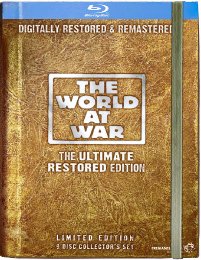
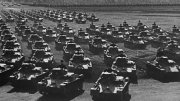
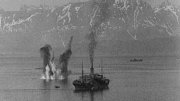
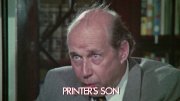
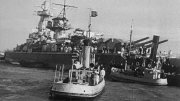
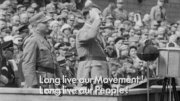
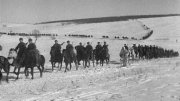
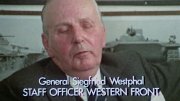
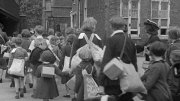
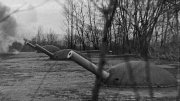
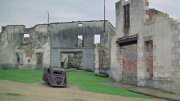
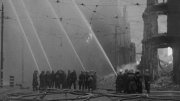

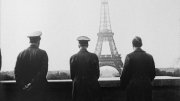


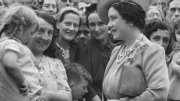
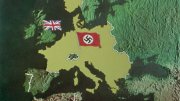

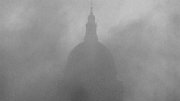
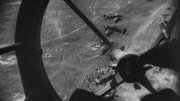

































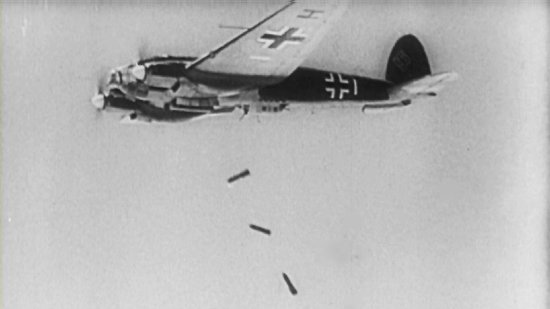



Your Opinions and Comments
Be the first to post a comment!